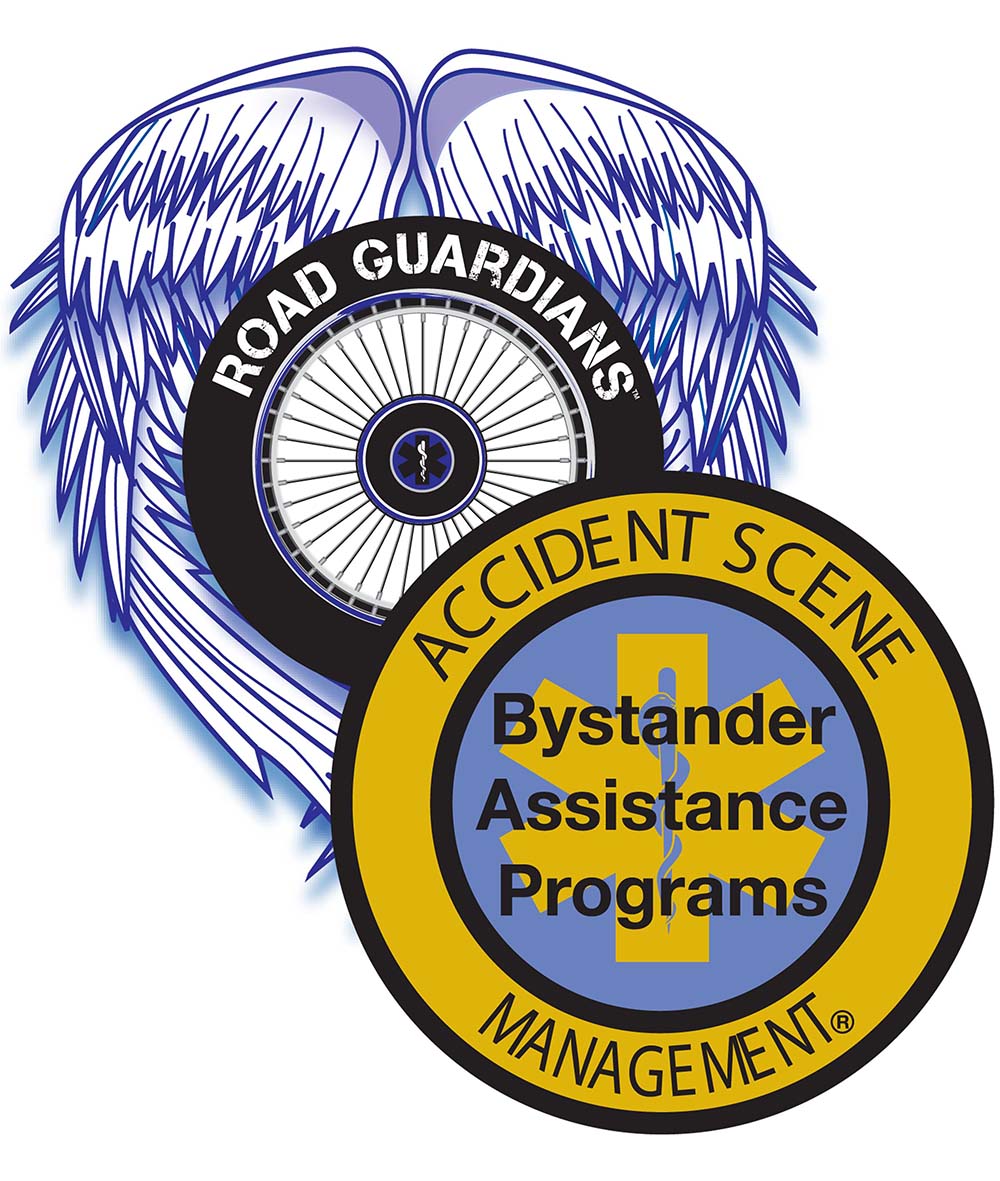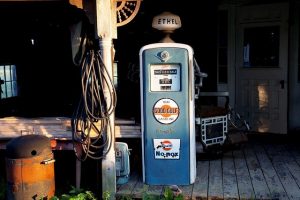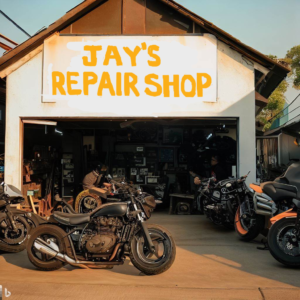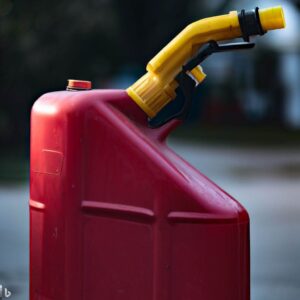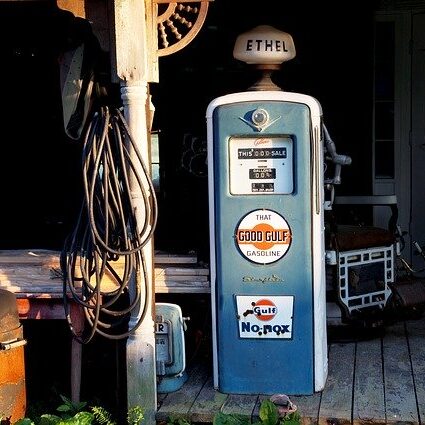
Understanding Ethanol-Related Fuel Problems
Written by: Biker Chad
We all have seen the signs and stickers on gas pumps everywhere stating that there is 10-15% ethanol added to our gasoline. This mixture is often referred to as E10 or “gasohol”. We usually just fill up our gas tanks and go, not ever giving a thought to what effects burning the added ethanol in our engines may have. Does ethanol damage engines? Do you lose power, performance, and MPG with ethanol? I have been asked these questions and many more at our bike shop numerous times. In this article I will try to answer these questions and tell you how to combat ethanol related engine problems.
Why is ethanol added to our fuel in the first place?
The answer to this question goes back to amendments made to the “Clean Air Act” in 1990. This amendment mandated that gasoline be oxygenated to cut down on Carbon Monoxide emissions. The first additive that was used to do this was Methyl Tertiary Butyl Ether (MBTE). MBTE had a very strong turpentine smell and it turned out to be proven to contaminate ground water. Little is known about the long term health hazards from exposure to MBTE contamination in our water. MBTE had been used for this as early as 1979 in some states as a replacement for the lead in leaded gasoline, however due to MBTE polluting ground water, it was replaced by ethanol around the year 2000. I worked at a small engine repair shop when MBTE was added to our gasoline. Our shop went from one full time mechanic to three mechanics working overtime to keep up with repairing damaged engines. It should be noted that gasoline with MBTE and gasoline with ethanol should not be mixed, as this can cause precipitates that clog fuel filters and carburetors.
Are there positive effects of ethanol in our gasoline?
Additives like MBTE or ethanol are used as an oxygenator in gasoline. Adding an oxygenate like MBTE or ethanol into gasoline reduces carbon monoxide emissions, thus reducing pollution, but this reduction in pollution is really only noticed in engines that have a carburetor and are not computer controlled by a “closed loop” EFI computer system. Any vehicle that has Electronic Fuel Injection (EFI) uses at least one oxygen sensor to analyze the exhaust, allowing the vehicle’s computer to make adjustments to control emissions, so they benefit very little from an ethanol mixed fuel as far as an emissions reduction goes. The main reason our fuel continues to be mixed with ethanol actually stems from the Bush administration’s push to reduce America’s dependency on foreign oil. 10% ethanol was added to dilute gasoline, which cut down on the amount of gasoline consumed, thereby reducing the amount of foreign oil we consumed.
What are the negative effects of using ethanol in our engines?
There are four major problems that I know of from ethanol in our gasoline;
Debris in fuel/premature fuel breakdown
It is almost impossible to empty all of the fuel from any engine system, so there is always old fuel somewhere in any fuel system. Straight gasoline starts to deteriorate around 30-60 days, and ethanol fuels break down even faster than straight gasoline. When gasoline breaks down, it leaves gum and varnish in fuel tanks, fuel lines, carburetors, etc. Ethanol happens to be a great cleaner of gums, varnishes, dirt and the rust that water in the fuel creates. That is why ethanol is used in almost every bottle of carb/injector cleaner on the market.
So when you fill up your tank, you introduce fresh ethanol that runs through your fuel system and dissolves the deposits, releasing all that crud to run through your engine’s fuel system, clogging fuel filters, injectors and carburetors. Clogged fuel filters will drop fuel pressure, telling the regulator to work the electric fuel pump harder to keep the fuel pressure up. This in turn burns out fuel pumps. Gummed up carburetors and fuel injectors all lead to poor performance and all of this leads to hefty repair bills. Considering you never really know how long the E10 sits at the refinery in a holding tank, before it gets transported to the pump station to sit in the underground storage tank, just to be purchased by you to sit in your tank before being burned in the engine, break down of the E10 gasohol fuel can be a real issue.
Water in fuel
Pure gasoline does not absorb water but ethanol will. Ethanol is hydrophilic, this means that it pulls moisture from the air and bonds with it. In ideal conditions, E10 gasohol will keep roughly .5% water by volume suspended in gasoline. Our fuel tanks and fuel storage cans are hardly ideal conditions as they need to be vented, allowing the ethanol to absorb more moisture from the atmosphere or in the form of condensation. Ethanol never truly bonds with gasoline molecules, it is a loose mixture at best, so when the threshold of .5% water is exceeded or the E10 gasohol mixture cools off every night, the water/ethanol solution falls out of suspension in the gasoline. Oil and gasoline float on water as they are lighter than water, so the water/ethanol mixture will stay at the bottom of your fuel tank.
The process of the water and ethanol separating from the gasoline and sinking to the bottom is called “Phase Separation”. Phase Separation is a real problem because when the water from the bottom of the tank is sucked up and sent to the engine it causes a lean condition, raising the engine temperature causing valve damage as well as damage to carburetors and fuel lines. Electronic fuel injection pumps pull fuel from the bottom of the tanks where the ethanol/water mix stays, and water doesn’t burn well in the engine, leading to premature engine/fuel system corrosion and poor engine performance. To top it off, ethanol and water mix in E10 gasoline is a breeding ground for microbes like bacteria and fungi, which just adds to the corrosion and debris in your fuel system.
Loss of power, octane rating, performance and mileage from E10 gasohol
Contrary to what most people believe, higher octane gas does not make your engine more powerful. Only if your engine is built for performance or racing with a higher compression rating will you need to use a higher octane gasoline. Your vehicle manufacturer tells you what octane rating to use depending on your vehicle’s requirements. This information can be found in the vehicle owner’s manual, on the fuel door or gas cap. At the pump you typically have three choices of octane ratings to use, gasoline that has octane ratings from 87 (lowest), 89 (midgrade), and 91 or 92 (premium). This is due to a few factors, but it is mainly relevant to the compression rating of your engine. The higher the compression, the higher the octane required. This is due to the fact that gasoline and air mixture heats up as the piston moves on the compression stroke, and if you are using the wrong octane rating it can ignite before the spark plug fires. This is called pre-ignition and it will damage the engine. Octane prevents this by slowing down the burn rate from an early damaging explosion, to a slower more controlled burn.
Pure ethanol has an octane rating of 113, so adding ethanol will raise the octane rating of gasoline. The gasoline blender takes this into consideration and uses a lower octane base gasoline, so when the ethanol is added you don’t get a higher octane fuel. Now what happens is this; you purchase E10 gasohol with an octane rating of 87, phase separation occurs, and as the ethanol sinks to the bottom of the tank the octane rating in the gasoline actually gets lowered to around 82 to 84. This is too low for a gasoline powered engine to run efficiently and causes loss of power and engine damaging pre-ignition. Ethanol produces about 34% less energy than the same amount one gallon of gasoline so in an E10 mixture you will lose 3% – 5% of your horse power and MPG.
Ethanol is corrosive
In addition to being an excellent solvent that sends gunk and grime through your engine, ethanol is also a drying agent and can disintegrate plastic, rubber, some types of fiber glass, aluminum and magnesium. Ethanol is most corrosive to ferrous metals (metals that contain iron, such as steel). This corrosion leaves behind salt deposits and a jelly like substance, both of which can clog fuel filters, fuel pumps and carburetors. Ethanol also burns at a higher temperature than gasoline causing damage to pistons. Any car or truck that is not a “Flex Fuel” vehicle is most likely not equipped with ethanol resistant parts and even less small engines like lawn mowers; motorcycles etc. are equipped with ethanol resistant parts.
Marine motors and ethanol especially do not get along due to the high water content in their operating environment. Due to the high damage rate and risk of marine motors developing polluting gasohol leaks from ethanol damage, a lot of marinas are currently offering ethanol free gasoline. According to the FAA ethanol is forbidden in airplane fuels (excluding air craft licensed as experimental). Using E10 in 2 cycle outdoor power equipment (weed whackers, chainsaws, etc.) can seize motors and most manufacturers will not honor warranties on their equipment if E10 is used. E10 is bad enough, but if E15 is put into place we can expect severe damage to any vehicle not equipped like an E85 Flex Fuel vehicle. Please consider that the levels of ethanol are not closely monitored by most gas stations, but you can purchase inexpensive ethanol test kits to be sure the ethanol percentage is not over 10%.
So what can we do?
When it comes to using ethanol laced fuel, unfortunately we do not have a choice, but there are some things we can do to minimize the damage to our engines;
- Every time you fill your fuel tank, be sure to use a fuel stabilizer like STA-BIL or Amsoil Gasoline Stabilizer, even if you are not planning on storing the machine or fuel. These stabilizers work by stabilizing otherwise unstable aromatic hydrocarbons and preventing microbial growth in the gasoline. If left untreated, gasoline goes bad as fast as two weeks. Stabilized gasoline can last a year or two depending on storage conditions.
- Properly stored gasoline should be mixed with a fuel stabilizer and then stored in a properly labeled plastic gasoline container in a cool dry place, away from any ignition sources. If stored on a cement floor, place a piece of plywood in between the container and the cement. Rotate and use any gas that is in storage regularly to keep storage time to a minimum.
- Keep any fuel tanks around 90% – 95% full to prevent condensation but still allow for expansion and contraction.
- Change fuel filters every year, or at the least every other year. Keep in mind some vehicles can have more than one fuel filter.
- For seasonally stored small engines (lawn mowers, motorcycles, chain saws, weed whackers etc.) always add a fuel stabilizer in the fuel. Be sure to run the motor long enough to get the stabilizer through the entire fuel system, including the carburetor or fuel injection. After storage be sure to add Amsoil Quick Shot before running the machine to prevent ethanol damage before the first use. Quick Shot is specially formulated for these types of small engines. This is especially important for any 2 cycle motor as they are VERY susceptible to ethanol damage.
- Inspect fuel lines every so often, like when an oil change is performed, or when washing the vehicle. As mentioned before, rubber, plastic, and even steel and aluminum can be damaged by ethanol. Leaking fuel lines can lead to a vehicle fire.
In Conclusion
Total prevention of ethanol problems is almost impossible, however by taking the preventative measures listed above, we can minimize the problems and damage ethanol can cause.
Written by: Biker Chad
